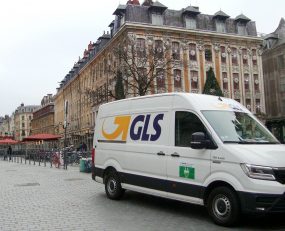
GLS has opened its new “European Eco Hub” operation in Essen, an investment of €15m and the capacity to process up to 75,000 shipments.
The hub is considered to be a big part of the company’s sustainability goals. It has 880 solar modules installed on the hall roof; a photovoltaic system has an output of 300 kilowatts, which should produce around 286 megawatt hours of solar power annually; and a battery storage system, which aims to ensure that the depot operation and the charging infrastructure for the electric vehicles also function when the sun is not shining. The system is said to be designed so that package production can be operated independently on 160 days a year. GLS said it aims to expand its second largest location in Germany even further in order to be able to process up to 200,000 parcels a day.
Also the delivery phase of parcels is intended to be done with as few emissions as possible. By the end of next year, GLS said it will be using over 20 electric vehicles in Essen. In addition, charging stations will be made available for the vehicles of employees, transport partners and their delivery drivers and visitors. Up to 300 new jobs will be created right from the start, as the company further explained.
“The new European Eco Hub in Essen is therefore a model for the entire group,” said Karl Pfaff, CEO of GLS Germany. “This location sets completely new standards as part of our GLS KlimaProtect program – especially with regard to sustainable operation.” Additionally, there is the use of heat pump technology, which is supplied with green electricity and cools the air in the halls by up to four degrees in the summer months. “With the creation of increasingly closed resource cycles for electricity, water and air, we have achieved three innovative milestones in the operation of a sustainable logistics location that go far beyond our previous environmental solutions”, adds Gero Liebig, GLS Region Manager West.
The hub also has a rainwater harvesting system. This could cover the internal consumption of usable water and at the same time the external supply of the green roof and the surrounding ponds.
Source: PV Magazine